Walk into any modern grocery store, and you'll find a mushroom section that would have amazed shoppers just a generation ago. Gone are the days when simple white button mushrooms were your only option. Today's produce aisles overflow with exotic varieties—golden chanterelles, meaty portobellos, delicate enokis, and earthy shiitakes—each offering unique flavors, textures, and impressive health benefits that make them culinary superstars.
With over 10,000 mushroom species in the world and roughly 2,200 that are edible, choosing which mushroom types for food to try can feel overwhelming. But here's the exciting part: understanding different edible mushroom varieties opens up endless culinary possibilities while delivering exceptional nutritional value. From cancer-fighting antioxidants to heart-healthy compounds, mushrooms are true functional foods that taste incredible and support your wellbeing.
Whether you're a home cook looking to expand your repertoire, a health enthusiast seeking nutrient-dense ingredients, or someone curious about growing your own gourmet varieties, this comprehensive guide covers everything you need to know about edible mushroom types. We'll explore 15 popular varieties, their distinct flavors and textures, nutritional profiles, best cooking methods, and how you can start cultivating your own mushroom garden at home.
Ready to discover why these fascinating fungi deserve a permanent place in your kitchen? Let's dive into the delicious world of edible mushroom types and transform how you cook and eat.
Understanding Edible Mushrooms: The Basics
Before exploring specific varieties, it's important to understand what makes mushrooms unique. Although commonly grouped with vegetables in grocery stores and recipes, mushrooms aren't plants at all—they're fungi. Unlike plants that produce food through photosynthesis, mushrooms obtain nutrients by breaking down organic matter, making them nature's recyclers.
What Makes Mushrooms "Edible"?
Edible mushrooms are fungal species that are safe to consume and offer nutritional or culinary value. While thousands of mushroom species exist, only a fraction are suitable for eating. Some are too tough or bitter, others provide minimal nutritional value, and many are toxic or even deadly.
Key characteristics of quality edible mushrooms:
- Safe for human consumption when properly prepared
- Pleasant flavor and texture (umami, nutty, earthy, meaty)
- Nutritional value with vitamins, minerals, and bioactive compounds
- Available fresh, dried, or cultivated commercially
- Consistent safety record without allergenic concerns for most people

The Nutritional Power of Mushrooms
Despite being low in calories (typically 20-45 calories per cup), mushrooms pack an impressive nutritional punch:
Universal mushroom benefits:
- High in fiber: Supports digestive health and satiety
- Low in fat and sodium: Heart-healthy choice
- Rich in B vitamins: Essential for energy metabolism
- Excellent source of selenium: Powerful antioxidant
- Contains potassium: Supports blood pressure regulation
- Provides vitamin D: Especially when exposed to UV light
- Packed with antioxidants: Including ergothioneine, the "longevity nutrient"
According to research from UCLA Health, eating just 18 grams of mushrooms daily (about 1/8 cup or two medium mushrooms) may lower your risk of cancer by up to 45%. Studies also show that consuming 1-2 cups of mushrooms weekly can reduce mild cognitive impairment risk by 50%.
For those interested in growing nutrient-dense mushrooms at home, our oyster mushroom identification guide helps you recognize these nutritional powerhouses in cultivation and the wild.
15 Popular Edible Mushroom Types for Food
1. White Button Mushrooms (Agaricus bisporus)
The undisputed champion of mushroom consumption, white button mushrooms account for 90% of mushrooms eaten in the United States. These mild-mannered fungi are actually the youngest version of the same species that produces cremini and portobello mushrooms.
Flavor Profile: Mild, slightly earthy, neutral
Texture: Firm when raw, tender when cooked
Best Uses: Raw in salads, sautéed, stuffed, pizza toppings, soups
Nutrition Highlight: Low calorie, good source of selenium and potassium
Cooking Tips: These versatile mushrooms can be eaten raw or cooked. Sauté in olive oil over medium heat for 8 minutes until browned, or roast at 400°F for a meatier texture. Their mild flavor makes them perfect for absorbing other ingredients' tastes.
2. Cremini Mushrooms (Baby Bella)
Cremini mushrooms are simply more mature white button mushrooms with a firmer texture and deeper, more robust flavor. These brown beauties are the middle stage between white buttons and full-grown portobellos.
Flavor Profile: Earthy, savory, richer than white buttons
Texture: Firm, meaty
Best Uses: Sauces, stews, stir-fries, as meat substitute
Nutrition Highlight: Excellent source of zinc for immune support
Cooking Tips: Cremini's firmer texture holds up well to longer cooking methods like braising and stewing. They're also delicious simply sautéed with garlic and herbs.
3. Portobello Mushrooms
These are fully mature cremini mushrooms with large, flat caps that can span 6 inches in diameter. Their substantial size and meaty texture make them vegetarian and vegan favorites.
Flavor Profile: Deep, earthy, rich umami
Texture: Substantial, meaty, steak-like when grilled
Best Uses: Grilled as "steaks," burger substitutes, stuffed and baked
Nutrition Highlight: Anti-inflammatory properties, cancer-fighting compounds
Cooking Tips: Remove stems and gills if desired. Marinate caps in olive oil, balsamic vinegar, garlic, and herbs before grilling for 10 minutes per side. Perfect as a burger patty alternative or sliced and added to pasta dishes.
For more meat substitute options, check out our trumpet mushrooms guide, which features the king oyster mushroom with similarly impressive meaty texture.
4. Shiitake Mushrooms (Lentinula edodes)
The second most popular mushroom globally, shiitake mushrooms are prized in Asian cuisine and traditional medicine. Their name comes from the Japanese "shii" (oak tree) and "take" (mushroom).
Flavor Profile: Rich, smoky, woodsy, umami-forward
Texture: Slightly chewy, tender caps
Best Uses: Stir-fries, soups, ramen, medicinal broths
Nutrition Highlight: Cholesterol-lowering compounds, immune-boosting polysaccharides
Cooking Tips: Remove tough stems (save for broth). Slice caps and sauté for 5-7 minutes until golden. Their rich flavor intensifies when dried and rehydrated. Shiitakes contain compounds that specifically inhibit cholesterol production and absorption.
5. Oyster Mushrooms (Pleurotus ostreatus)
Named for their oyster-like shape and subtle seafood flavor, these delicate mushrooms grow in shelf-like clusters on trees. They come in multiple colors including white, pearl gray, pink, golden yellow, and blue.
Flavor Profile: Mild, slightly sweet, hint of anise
Texture: Tender, velvety, delicate
Best Uses: Sautéed, soups, stir-fries, raw in salads
Nutrition Highlight: High in niacin (B3) and riboflavin (B2), anti-inflammatory compounds
Cooking Tips: Cook oyster mushrooms gently and briefly to preserve their delicate texture. Pan-sear whole clusters in butter for stunning presentations, or tear into strips for stir-fries. These are among the easiest mushrooms to cultivate at home.
6. King Oyster Mushrooms (King Trumpet)
The largest and meatiest of the oyster mushroom family, king oyster mushrooms feature thick white stems and small brown caps. Their substantial texture rivals that of meat or seafood.
Flavor Profile: Mild, nutty, umami-rich
Texture: Dense, meaty, scallop-like
Best Uses: Grilled "steaks," roasted, sautéed medallions
Nutrition Highlight: High protein, cholesterol management, immune support
Cooking Tips: Slice stems into thick medallions, score in crosshatch pattern, and sear for scallop-like texture. Or slice vertically and grill like steaks. Their firm texture holds up to any cooking method. For detailed health benefits, see our king trumpet mushroom benefits guide.
7. Enoki Mushrooms (Flammulina velutipes)
These delicate mushrooms grow in tight clusters with tiny white caps atop long, thin stems. Cultivated enoki are pale and delicate, while wild varieties are darker and shorter.
Flavor Profile: Mild, slightly fruity, crunchy
Texture: Crisp when raw, slightly slimy when cooked
Best Uses: Raw in salads, soups, hot pots, garnishes
Nutrition Highlight: Low calorie, high in antioxidants
Cooking Tips: Separate clusters and add to soups during last 2-3 minutes of cooking. Their natural crunch makes them excellent raw in salads. Trim off the base where stems join together (not edible).

8. Morel Mushrooms (Morchella species)
One of the most prized wild mushrooms, morels are distinguished by their honeycomb-textured caps. These springtime treasures command premium prices and inspire devoted foragers.
Flavor Profile: Nutty, earthy, complex
Texture: Meaty, slightly chewy
Best Uses: Sautéed in butter, cream sauces, risotto, stuffed ravioli
Nutrition Highlight: High in vitamin D, iron, and antioxidants
Cooking Tips: Never eat morels raw—they must be cooked! Clean thoroughly (honeycomb structure traps dirt). Sauté in butter with shallots for the classic preparation. Their rich flavor pairs beautifully with cream, wine, and fresh herbs.
Our large morel mushrooms guide offers detailed foraging and preparation tips for these spring delicacies.
9. Chanterelle Mushrooms (Cantharellus species)
These golden-yellow mushrooms are among the most sought-after wild varieties, prized by chefs worldwide for their delicate flavor and stunning appearance.
Flavor Profile: Fruity, apricot-like, peppery
Texture: Tender, slightly chewy
Best Uses: Sautéed, cream sauces, eggs, pasta
Nutrition Highlight: High in vitamin C, potassium, and copper
Cooking Tips: Clean gently with damp cloth (they're delicate). Sauté over medium-low heat with butter—their flavor is subtle and shouldn't be overwhelmed. Never boil chanterelles as they become tough and bitter.
10. Porcini Mushrooms (Boletus edulis)
Known as "king bolete" or "cèpe," porcini mushrooms are beloved in Italian and French cuisine for their smooth texture and aromatic, woodsy flavor. Fresh porcinis are rare finds outside their native regions.
Flavor Profile: Nutty, earthy, deeply savory
Texture: Smooth, creamy when cooked
Best Uses: Risotto, pasta, soups, sauces
Nutrition Highlight: High in protein, selenium, and antioxidants
Cooking Tips: Fresh porcini are expensive but worth it—simply slice and sauté. Dried porcini are more accessible and intensely flavorful. Rehydrate in hot water for 20 minutes; use the flavorful soaking liquid in risottos and sauces.
11. Maitake Mushrooms (Hen of the Woods)
These impressive mushrooms grow in large, frilly clusters at the base of oak trees. Their name translates to "dancing mushroom" in Japanese, as people allegedly danced with joy upon finding them.
Flavor Profile: Earthy, woodsy, slightly peppery
Texture: Crisp, frilly edges
Best Uses: Roasted, sautéed, tempura-style
Nutrition Highlight: Immune-boosting beta-glucans, vitamin D source
Cooking Tips: Don't wash—brush off debris instead. Tear into smaller clusters and roast at high heat (425°F) to crisp the frilly edges. Maitake's unique texture makes it excellent for tempura.
12. Lion's Mane Mushrooms (Hericium erinaceus)
These distinctive white mushrooms resemble cascading icicles or a lion's mane. Recent research highlights their potential cognitive and neurological benefits.
Flavor Profile: Mild, slightly sweet, seafood-like
Texture: Tender, shreds like crab meat
Best Uses: "Crab" cakes, sautéed, grilled
Nutrition Highlight: Nerve growth factors, cognitive support, neuroprotective compounds
Cooking Tips: Tear or slice into thick "steaks." Sauté in butter until golden brown for a texture remarkably similar to crab or lobster. Their seafood-like quality makes them excellent meat alternatives in coastal-style dishes.
13. Beech Mushrooms (Shimeji)
These petite mushrooms grow in tight clusters and come in white (Bunapi-shimeji) and brown (Buna-shimeji) varieties. They're staples in Japanese cuisine.
Flavor Profile: Nutty, slightly sweet (white variety milder)
Texture: Crisp, tender
Best Uses: Stir-fries, soups, noodle dishes
Nutrition Highlight: Low calorie, high in amino acids
Cooking Tips: Must be cooked—never eat raw (slightly toxic uncooked). Separate clusters, trim base, and sauté over medium-high heat. Their nutty flavor develops beautifully when cooked, becoming rich and complex.
14. Black Trumpet Mushrooms (Horn of Plenty)
Despite their ominous name "trumpet of death" in French, these funnel-shaped black mushrooms are completely edible and delicious. They're related to chanterelles.
Flavor Profile: Rich, smoky, truffle-like
Texture: Delicate, slightly chewy
Best Uses: Dried and powdered, cream sauces, risotto
Nutrition Highlight: High in iron and fiber
Cooking Tips: Clean carefully as their funnel shape traps debris. Their intense flavor means a little goes a long way. Dried black trumpets can be ground into powder and used as umami seasoning.
15. Wood Ear Mushrooms (Auricularia auricula-judae)
These jelly-like mushrooms with ear-shaped forms are staples in Asian cuisine, particularly Chinese cooking. They're prized for their unique crunchy texture.
Flavor Profile: Mild, neutral, absorbs surrounding flavors
Texture: Crunchy, gelatinous, maintains bite when cooked
Best Uses: Hot and sour soup, stir-fries, salads
Nutrition Highlight: Antioxidant-rich, heart health support, anti-inflammatory
Cooking Tips: Usually sold dried—rehydrate in warm water for 15-20 minutes. Add to soups and stir-fries during last few minutes of cooking. Their neutral flavor and satisfying crunch make them versatile. For complete information, see our detailed wood ear mushrooms guide.
Health Benefits Common to Most Mushroom Types
While each mushroom variety offers unique nutritional benefits, research shows that consuming any edible mushroom regularly provides remarkable health advantages:
1. Cancer Risk Reduction
A comprehensive 2019 review of 17 cancer studies found that people who ate just 18 grams of mushrooms daily had a 45% lower cancer risk compared to those who didn't eat mushrooms. The ergothioneine and other antioxidants in mushrooms protect cells from damage and may prevent tumor formation.
2. Heart Health Support
Mushrooms support cardiovascular health through multiple mechanisms:
- Low in sodium (about 5mg per cup)
- High in potassium (helps regulate blood pressure)
- Contains beta-glucans that lower cholesterol
- Provide anti-inflammatory compounds
Studies show that replacing half the meat in ground beef recipes with mushrooms reduces sodium intake by 25% while maintaining flavor.
3. Brain and Cognitive Protection
Research from Singapore found that adults 60+ who ate more than 2 cups of mushrooms weekly had 50% lower risk of mild cognitive impairment. The antioxidants in mushrooms, particularly ergothioneine, may protect against neurodegenerative diseases like Alzheimer's and Parkinson's.
4. Immune System Enhancement
Beta-glucans and polysaccharides in mushrooms stimulate immune cell activity, helping your body fight infections more effectively. These compounds act as immunomodulators, strengthening natural defenses.
5. Gut Health Promotion
Mushrooms contain prebiotic fibers and polysaccharides that feed beneficial gut bacteria. Unlike many foods broken down by stomach acid, mushroom polysaccharides reach the colon intact, where they nourish your microbiome.
6. Vitamin D Source
When exposed to UV light (sunlight or commercial UV treatment), mushrooms produce vitamin D2. Placing sliced mushrooms in direct sunlight for just 15 minutes can provide 100% of your daily vitamin D needs—rare for plant-based foods.
Best Cooking Methods for Different Mushroom Types
Sautéing (Most Versatile Method)
Best for: White button, cremini, shiitake, oyster, king oyster, maitake
Heat pan over medium-high heat with olive oil or butter. Add mushrooms in single layer (don't crowd). Cook 8-10 minutes, stirring occasionally until golden brown. Season with salt, pepper, garlic, and fresh herbs.
Roasting (Maximum Flavor Development)
Best for: Portobello, king oyster, maitake, shiitake
Toss mushrooms with olive oil, salt, pepper. Roast at 400-425°F for 20-25 minutes until caramelized and crispy. High heat concentrates flavors and creates beautiful texture.
Grilling (Meat-Like Results)
Best for: Portobello, king oyster, large shiitake
Marinate in olive oil, balsamic, garlic, and herbs for 30 minutes. Grill over medium-high heat 4-5 minutes per side. Perfect for burgers and "steaks."
Adding to Soups and Stir-Fries
Best for: Enoki, wood ear, beech, oyster
Add delicate mushrooms during final 2-3 minutes of cooking to preserve texture. Heartier varieties can simmer longer.
Deep-Frying/Tempura
Best for: Maitake, oyster, lion's mane
Coat in light tempura batter and fry at 350°F until golden and crispy. The frilly textures become incredibly crunchy.
General Mushroom Cooking Tips
- Don't wash mushrooms under running water—they absorb moisture like sponges. Use damp cloth or mushroom brush instead
- Give mushrooms space in the pan—overcrowding creates steam instead of browning
- Start with high heat to release moisture quickly, then reduce to brown properly
- Add salt after cooking to prevent mushrooms from releasing too much water
- Cook most varieties thoroughly—only certain mushrooms (white button, cremini, portobello, oyster) are safe raw
- Save stems for vegetable stock—they're full of flavor even if too tough to eat
Growing Your Own Edible Mushrooms at Home
One of the most rewarding aspects of mushroom enthusiasm is cultivating your own gourmet varieties at home. Modern mushroom growing technology has made this easier than ever, allowing anyone to harvest fresh, organic mushrooms year-round.
Easiest Mushroom Types to Grow at Home
Oyster Mushrooms: The absolute best for beginners. Fast-growing, forgiving, high-yielding. Available in multiple colors (pearl, golden, pink, blue). Ready to harvest in just 7-10 days.
Shiitake: Reliable producers on logs or sawdust blocks. Take longer than oysters (2-3 weeks) but offer incredible flavor and market value.
Lion's Mane: Striking appearance, premium price, relatively easy cultivation. Requires slightly cooler temperatures than oysters.
King Oyster (Trumpet): Meaty texture, excellent yields. Slightly more challenging than regular oysters but well worth the effort.
Modern Growing Solutions
The Lykyn Smart Mushroom Grow Kit revolutionizes home mushroom cultivation with automated environmental controls that maintain perfect humidity and airflow. Simply select your mushroom variety in the app, add water, place your substrate block, and watch your gourmet mushrooms flourish.
This intelligent system removes the guesswork from mushroom growing, making it virtually impossible to fail even as a complete beginner. The automated chamber creates optimal conditions for multiple mushroom types, from oysters and shiitake to lion's mane and more exotic varieties.
For those new to mushroom cultivation, our best mushroom grow kit for beginners guide explores various growing systems and helps you choose the perfect setup for your space and goals.
Benefits of Growing Your Own Mushrooms
- Freshness: Harvest at peak flavor and nutrition
- Cost savings: Fresh gourmet mushrooms are expensive; growing your own saves money
- Organic control: Know exactly what goes into your food
- Year-round availability: Indoor growing isn't limited by seasons
- Educational: Fascinating process that connects you with food production
- Sustainable: Mushrooms can grow on agricultural waste and recycled materials
Mushroom Safety: Critical Guidelines
While this guide focuses on safe, delicious edible varieties, mushroom safety deserves serious attention:
Never Forage Wild Mushrooms Without Expert Guidance
Some poisonous mushrooms closely resemble edible varieties. The death cap (Amanita phalloides) and destroying angel (Amanita virosa) are deadly and can look similar to edible mushrooms to untrained eyes.
Foraging safety rules:
- Only harvest mushrooms with 100% positive identification
- Learn from experienced foragers or take formal identification courses
- Use multiple field guides and identification resources
- When in doubt, throw it out—no mushroom is worth risking your life
- Take spore prints to confirm identification
- Never rely solely on smartphone apps for identification
Store-Bought Mushroom Safety
Commercially sold mushrooms are generally safe, but follow these guidelines:
- Choose firm, dry mushrooms without slime or dark spots
- Avoid mushrooms that smell sour or unpleasant
- Store in paper bags (not plastic) in refrigerator
- Use within 5-7 days of purchase
- Cook thoroughly unless variety is confirmed safe raw
Allergies and Sensitivities
While rare, some people experience allergic reactions to mushrooms. Start with small portions when trying new varieties. Those with mold allergies should consult healthcare providers before consuming mushrooms.
Frequently Asked Questions About Mushroom Types for Food
What are the healthiest mushroom types to eat?
All edible mushrooms provide health benefits, but shiitake, maitake, oyster, and king oyster mushrooms contain particularly high levels of ergothioneine and other antioxidants. These varieties show the strongest cancer-preventive and immune-supporting properties in research studies.
Can you eat mushrooms raw?
Only certain mushrooms are safe raw: white button, cremini, portobello, and oyster mushrooms. Most other varieties, including shiitake, morel, and beech mushrooms, must be cooked to neutralize compounds that can cause digestive upset. When in doubt, cook your mushrooms thoroughly.
What's the difference between white, cremini, and portobello mushrooms?
They're actually the same species (Agaricus bisporus) at different stages of maturity. White buttons are youngest with mildest flavor. Cremini (baby bella) are more mature with darker color and richer taste. Portobellos are fully mature with the most robust, meaty flavor and largest size.
How do you know if mushrooms have gone bad?
Bad mushrooms develop slimy texture, dark spots, wrinkled appearance, or sour smell. Fresh mushrooms should be firm, dry, and smell earthy or pleasant. When mushrooms feel mushy or sticky, discard them immediately.
What mushroom tastes most like meat?
Portobello, king oyster (trumpet), and lion's mane mushrooms provide the most meat-like texture. Portobellos are perfect as burger patties. King oysters can be sliced into "scallops" or "steaks." Lion's mane shreds like crab meat, making it ideal for seafood-style dishes.
Are dried mushrooms as nutritious as fresh?
Yes! Dried mushrooms retain most nutrients and often have more concentrated flavor. Some nutrients, like vitamin D, may actually increase during sun-drying. Dried mushrooms are excellent alternatives when fresh varieties aren't available, especially for porcini, morels, and shiitake.
How much mushroom should I eat per day for health benefits?
Research suggests eating 18 grams (about 1/8 cup or 2 medium mushrooms) daily provides significant cancer-prevention benefits. For cognitive protection, studies show 1-2 cups per week reduces mild cognitive impairment risk by 50%. Any regular mushroom consumption supports overall health.
Can I grow gourmet mushrooms at home without experience?
Absolutely! Modern mushroom grow kits make cultivation accessible to complete beginners. The Lykyn Smart Mushroom Grow Kit automates the entire process, maintaining perfect growing conditions automatically. Oyster mushrooms are particularly forgiving for first-time growers, producing harvests in just 7-10 days.
Featured Snippet Summary
Common edible mushroom types include: white button (mildest, most popular), cremini/baby bella (richer flavor), portobello (mature, meaty), shiitake (Asian staple, medicinal), oyster (delicate, fast-growing), king oyster/trumpet (scallop-like texture), enoki (crunchy clusters), morel (prized wild mushroom), chanterelle (fruity, golden), porcini (Italian favorite), maitake (immune-boosting), lion's mane (cognitive benefits), and wood ear (Asian soups). Most mushrooms are low-calorie (20-45 calories/cup), high in B vitamins, selenium, and antioxidants. Eating 18g daily may reduce cancer risk by 45%. Best cooked by sautéing, roasting, or grilling. Only white button, cremini, portobello, and oyster safe raw.
Start Your Mushroom Journey Today
The world of edible mushroom types offers endless culinary adventures and impressive health benefits that go far beyond basic nutrition. From the familiar comfort of white button mushrooms to the exotic appeal of lion's mane and chanterelles, each variety brings unique flavors, textures, and wellness-supporting compounds to your table.
Whether you're a health-conscious eater seeking functional foods, an adventurous cook exploring new ingredients, or someone interested in sustainable food production, mushrooms deliver on every level. Their versatility in the kitchen, combined with scientifically-proven health benefits and relatively simple home cultivation, makes them ideal additions to any modern diet.
Ready to grow your own gourmet mushroom varieties? The Lykyn Smart Mushroom Grow Kit makes home cultivation effortless with automated environmental controls that ensure success even for complete beginners. Harvest fresh oyster, shiitake, lion's mane, and other premium varieties right in your kitchen year-round.
For more mushroom cultivation guides, cooking inspiration, and in-depth variety profiles, explore our complete collection of mushroom resources. Join thousands of mushroom enthusiasts discovering the joy of growing and cooking with these remarkable fungi. Your journey into the delicious, nutritious world of edible mushroom types starts here!

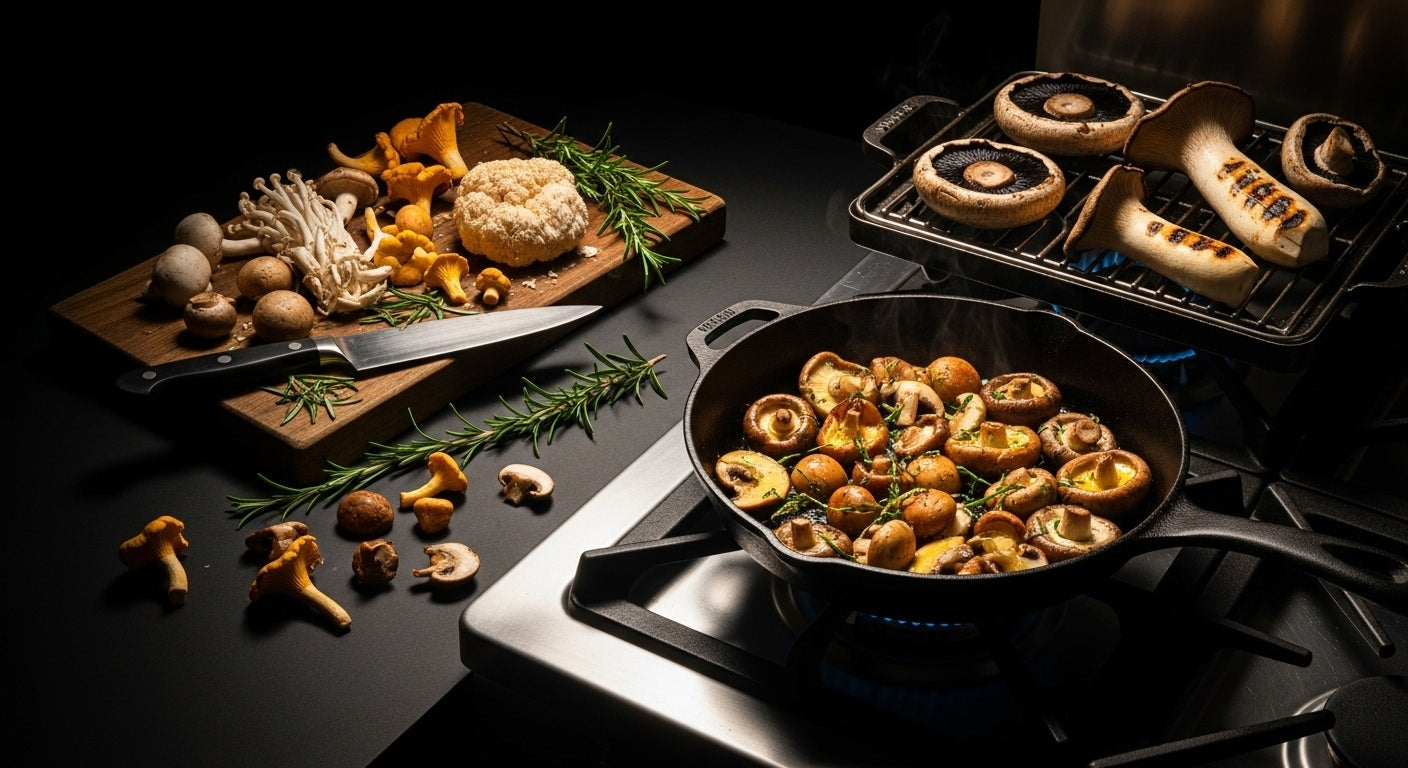




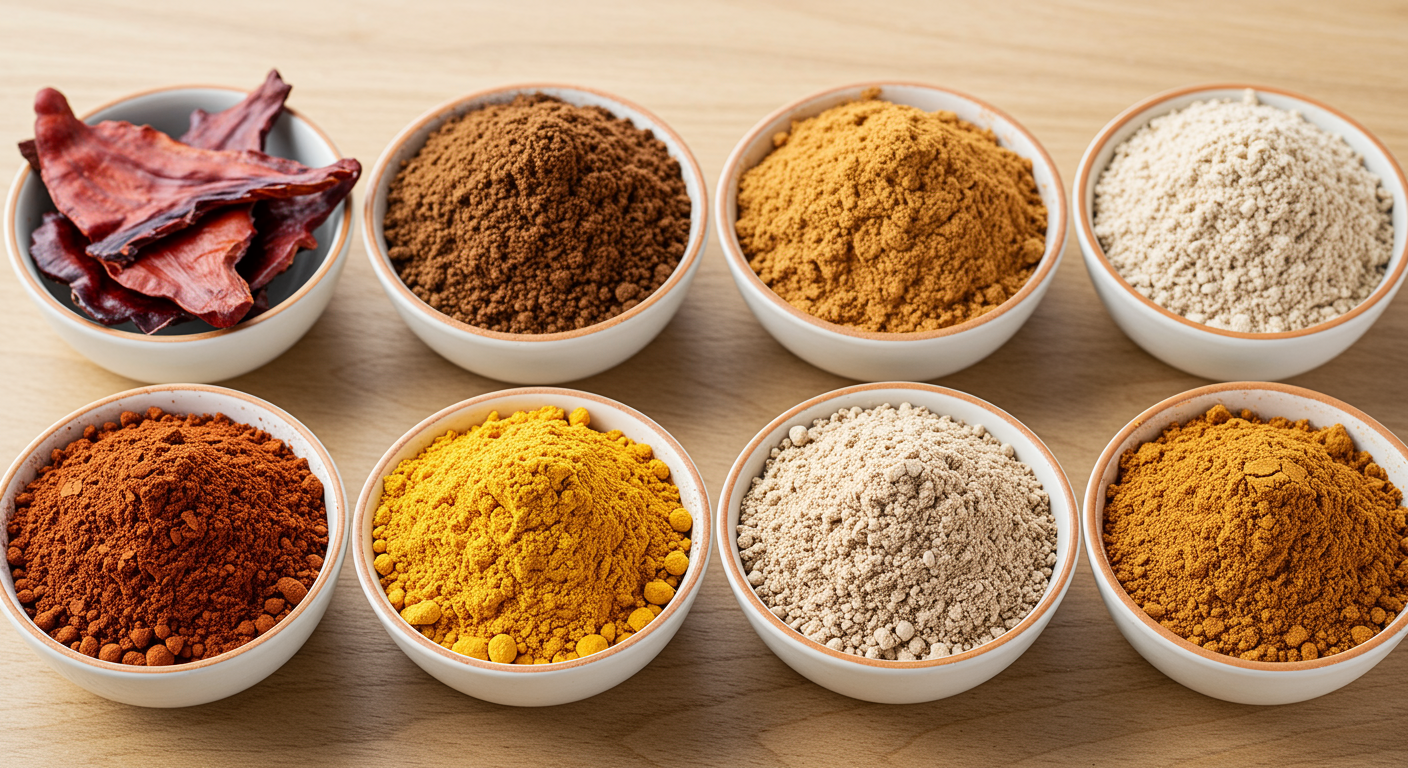

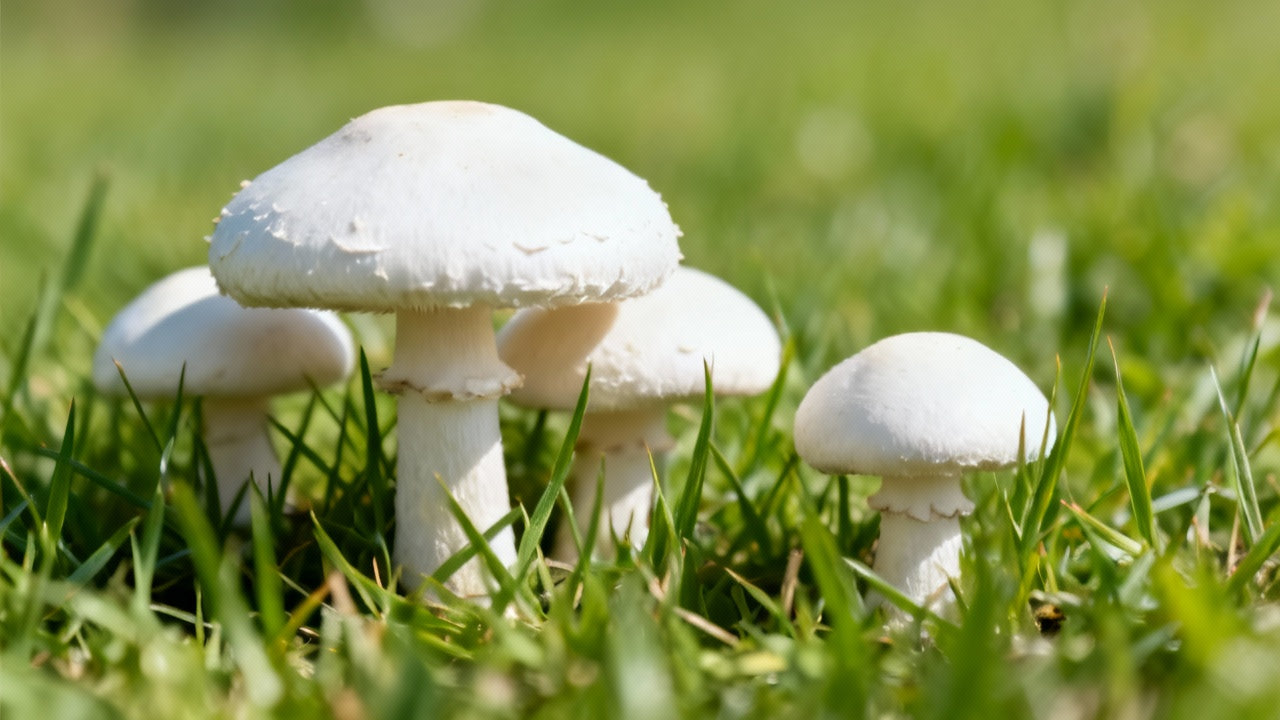
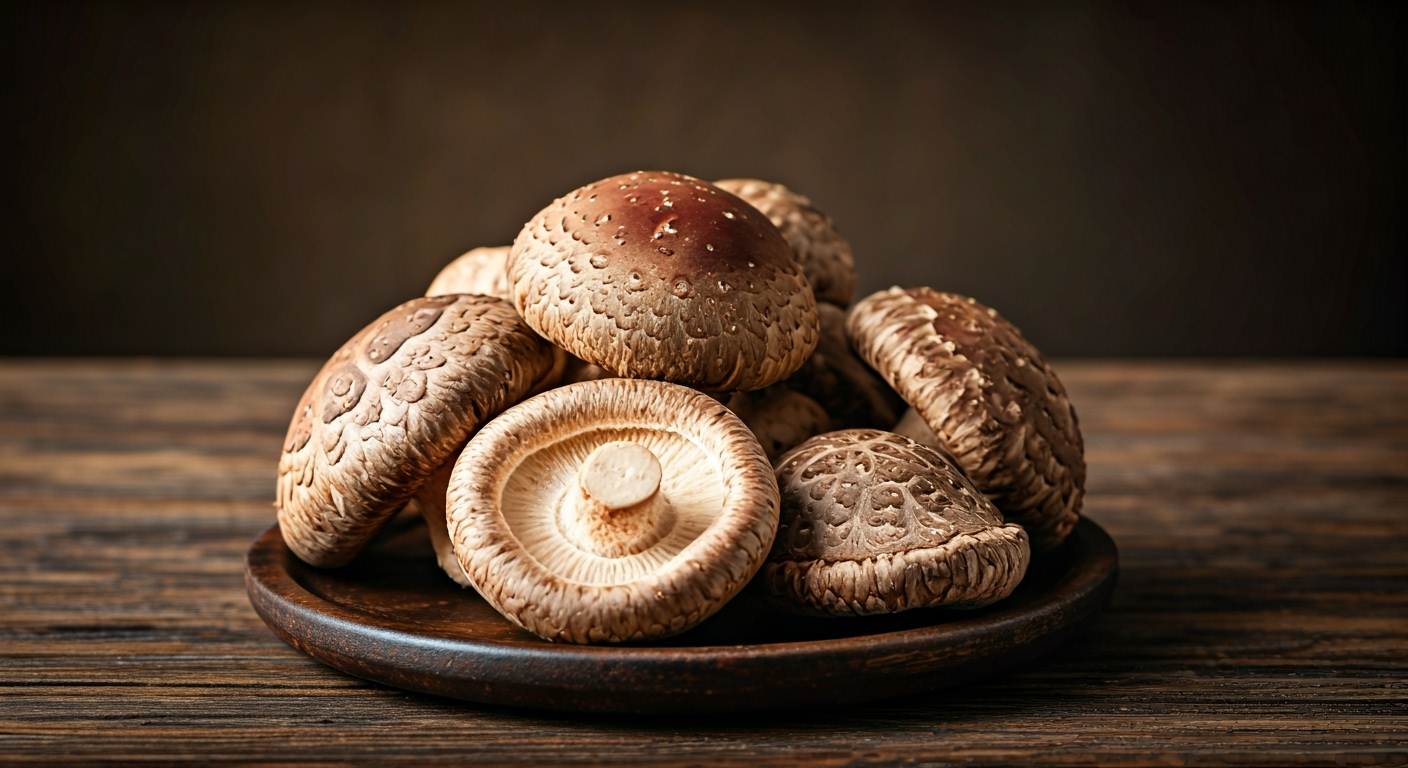
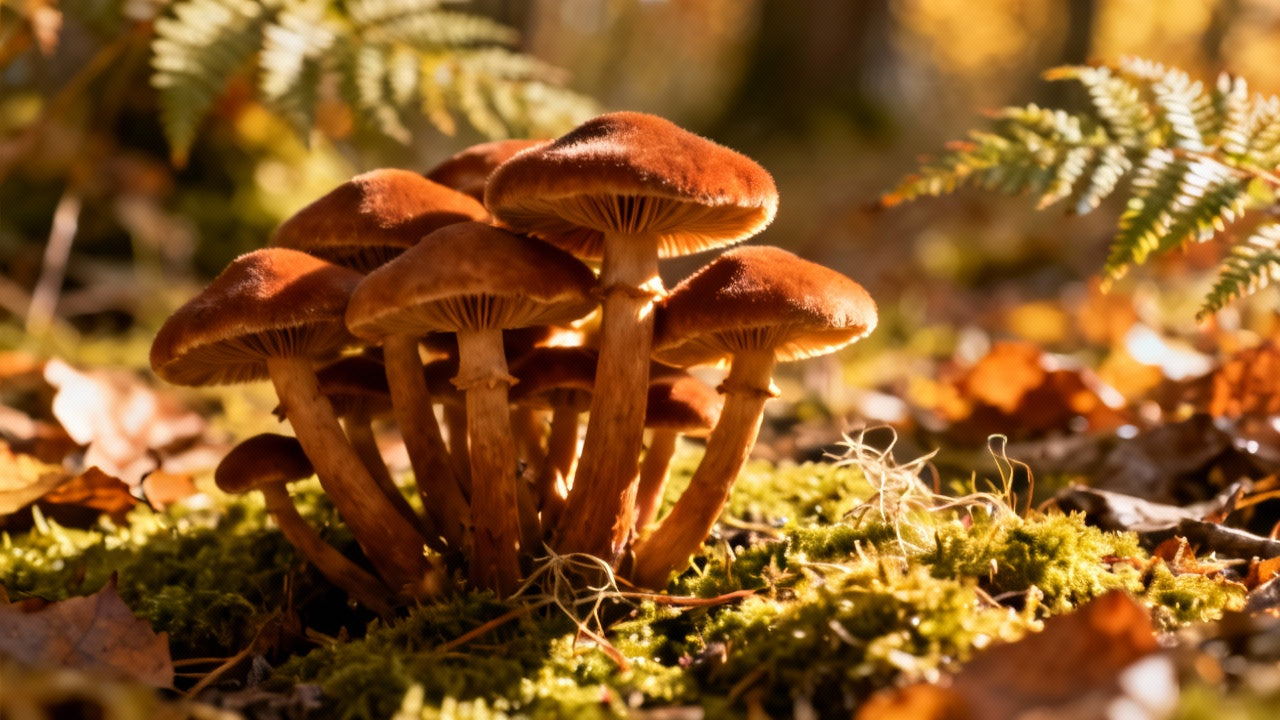
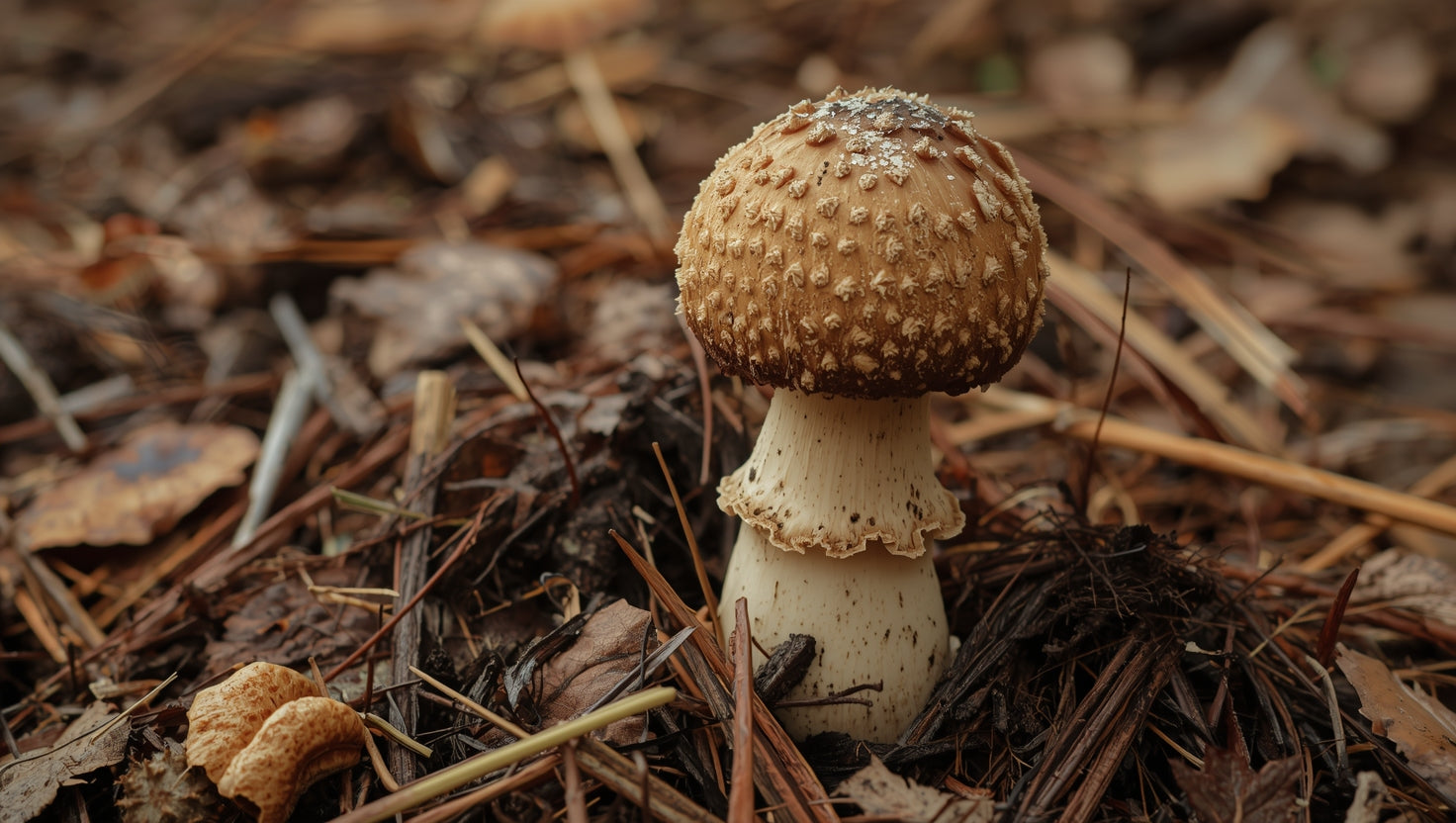
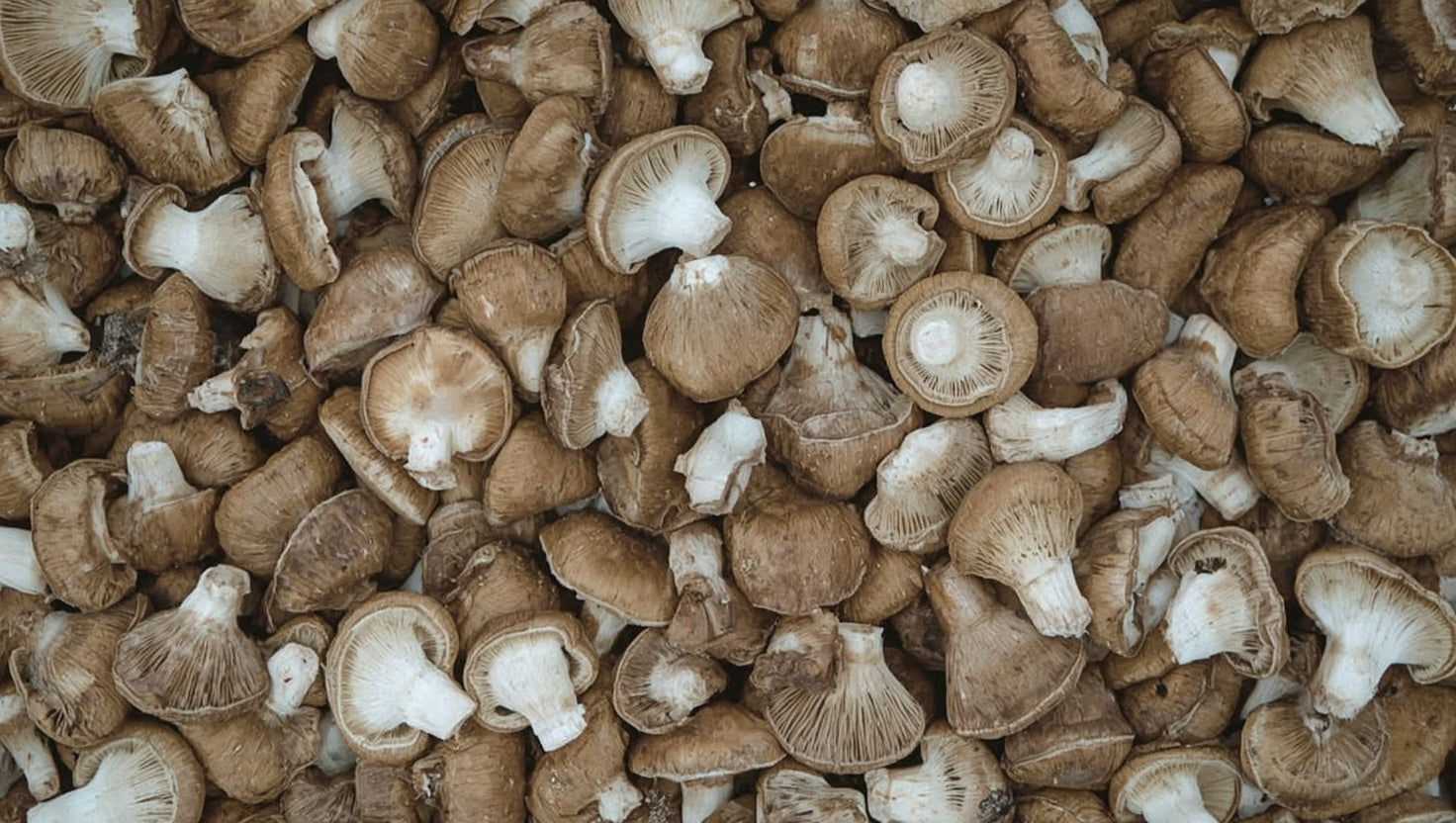
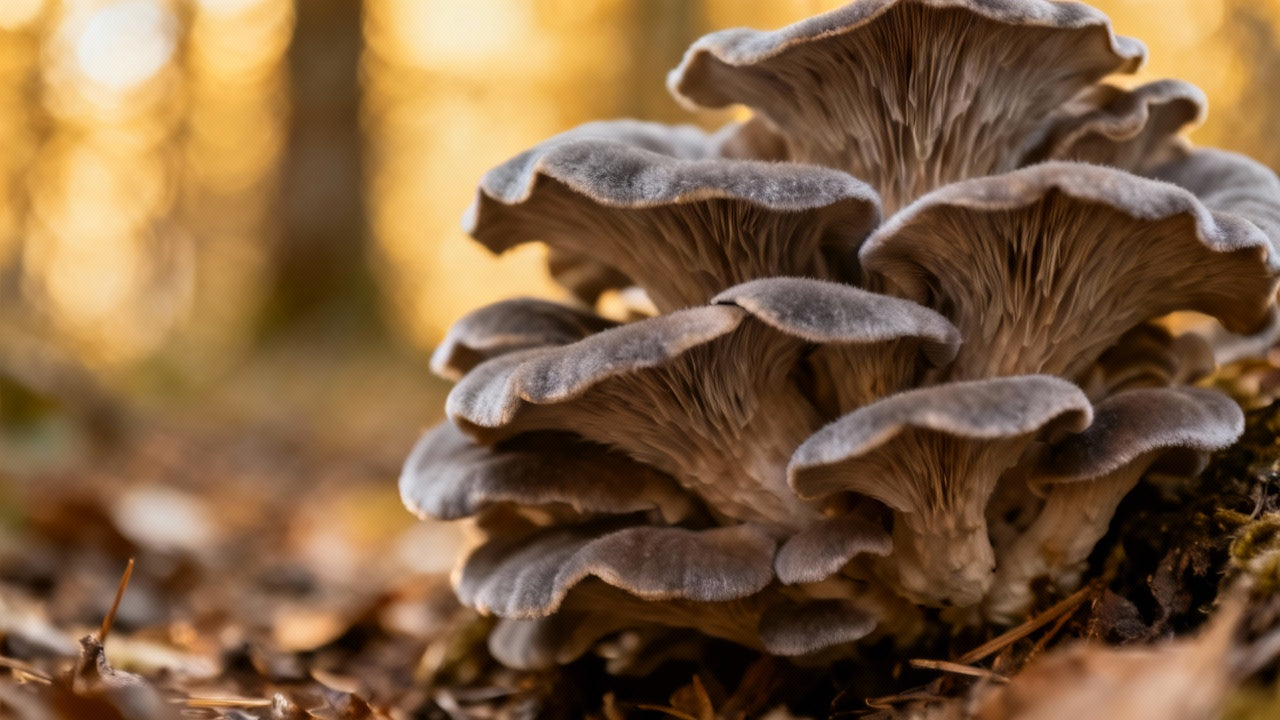
Share:
How to Choose the Best Mushroom Kit: Your Complete Buying Guide for 2025
Beginner's Guide to Mushroom Growing Kits: Everything You Need for Your First Successful Harvest